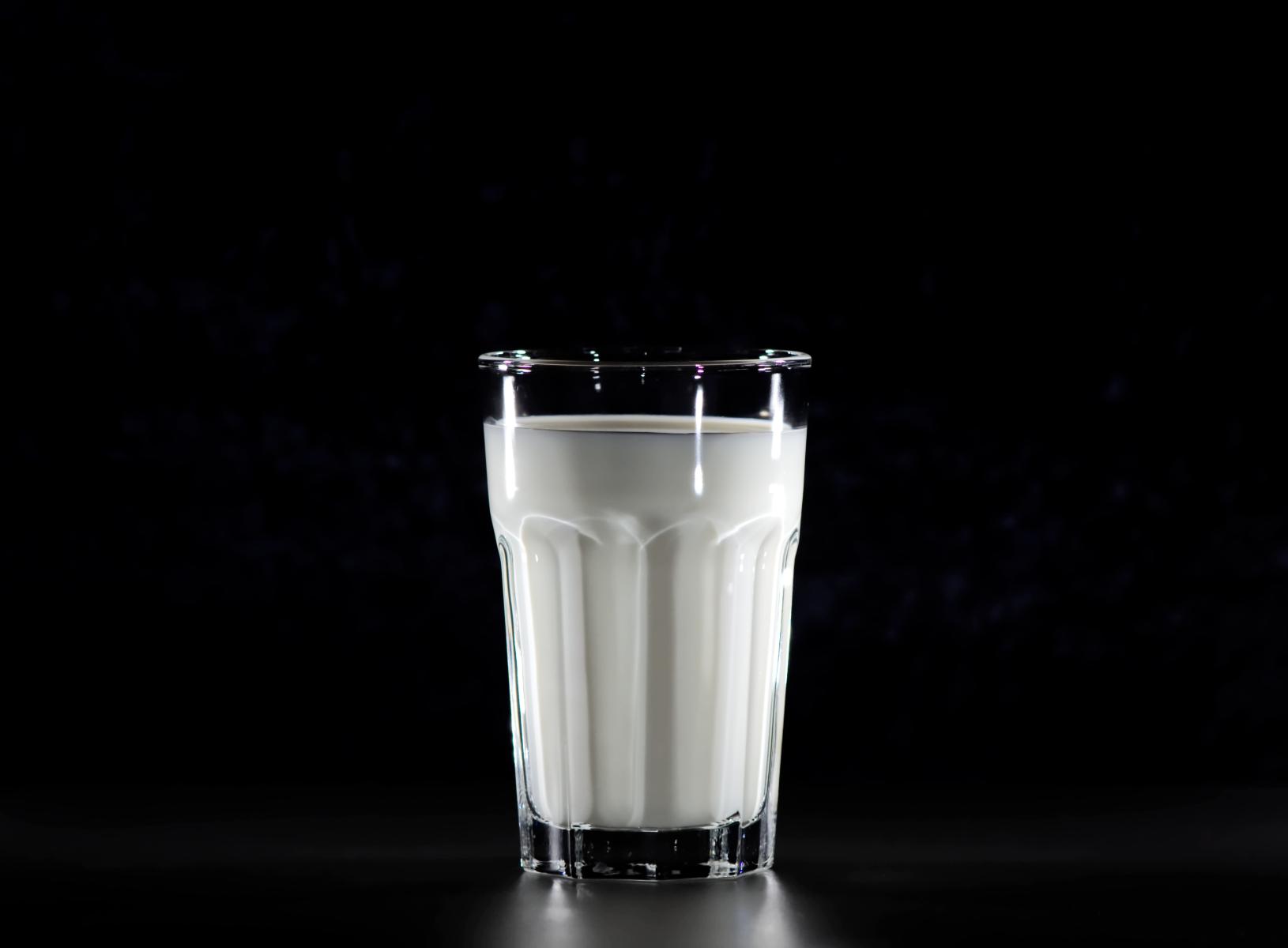Walking through the dairy aisle at a grocery store can be an overwhelming experience. Let's learn more about milk choices available to make smarter choices.

Monday, June 6, 2022
Walking through the dairy aisle at a grocery store can be an overwhelming experience. There is an incredible amount of options to choose from especially when selecting milk. There is regular cow’s milk, almond milk, soy milk, cashew milk, and the list goes on. One question that might commonly be on everyone's’ mind is, “What’s the difference?” A simple answer to that question is that milk in its truest form comes from an animal, like a cow or goat. In recent years plant-based or non-dairy “milks” have risen in popularity. These milks are usually made by adding water to the ground-up plant base and straining out the leftover solids. There are a lot of options to choose from within this category and finding the milk that works best for you might just take some experimentation to see which types, textures, and varieties you like best. Overall, one important thing to remember is that non-dairy milk will offer different nutritional benefits than cow’s milk.

Cow’s Milk
Typically, you can purchase cow’s milk as whole milk, reduced fat or 2%, low fat or 1%, and fat free or skim varieties. The nutrients in each of these varieties are relatively similar across the board, but what changes is the fat and caloric content. Whole milk is the highest in fat and calories and skim milk, with 0g of fat is the lowest in calories. In one cup of cow’s milk, no matter the variety you choose, each one has 8 grams of complete protein as well as other nutrients like calcium, Vitamin D, phosphorus, and several B vitamins.
Another available form of cow’s milk is lactose-free milk. This milk also has similar nutritional benefits to regular cow’s milk, but the enzyme lactase has been added to break down the lactose molecules, which is the main carbohydrate in milk . The addition of the lactase enzyme makes this milk a better option for people with a lactose intolerance.
Non-Dairy Milk
Non-dairy milks, or plant-based milks, have been growing in variety and popularity recently. They have become popular choices for many people who are allergic or intolerant to dairy products, prefer to follow a vegetarian or vegan lifestyle, have ethical or environmental concerns related to the dairy industry, or for people who prefer the flavor of plant-based milk over cow’s milk. Plant-based milks offer an excellent alternative to cow’s milk, but it is important to know that they do not offer the same nutritional benefits. For example, most plant-based milks have less protein per serving with soy milk having about 7g of protein per 1 cup and almond milk having 1 g of protein per cup.
Another nutrient that is high in cow’s milk, but low in milk alternatives is calcium. Calcium is essential for bone health, and dairy products like milk and yogurt are some of the highest sources of calcium in the diet. To make up for this lack in calcium, many plant-based milks are fortified with either calcium carbonate or tri-calcium phosphate to have similar amounts of calcium per cup as cow’s milk. While calcium is usually added, there is still a question of how well your body can absorb and use this calcium.

Different types of calcium are absorbed differently in the body. Additionally, the calcium can settle to the bottom of the carton, meaning not every glass will have the full amount of calcium per serving. Finally, there are other components present in some plant based milks, like soy, cashew and almond, called oxalates that are known to inhibit calcium absorption. Research on how these chemicals affect absorption of calcium in milk substitutes is limited, but this is one concern surrounding calcium fortified plant based milks as an alternative source of calcium to cow’s milk. Overall, there needs to be more research on the absorption of calcium from fortified plant-based milk to help consumers make choices that are right for them.
Here are some helpful tips that can help you get the most calcium from your non-diary milk and meet your calcium needs.
|
One last thing to consider when choosing non-dairy milks is the flavor or variety of milk. Some milks have added sugar to enhance flavor. Check the nutrition facts panel and choose unsweetened versions to avoid adding extra sugar to your diet.
Check out this table comparing some of the nutritional benefits of different non-dairy milks! All values are nutrient amounts in 8 fl oz.
| Type of Milk* | Calories | Fat (g) | Saturated fat (g) | Protein (g) | Carbohydrates (g) | Sugar (g) |
| Whole | 150 | 8 | 5 | 8 | 12 | 12 |
| 2% | 130 | 5 | 3 | 8 | 12 | 12 |
| 1% | 110 | 2.5 | 1.5 | 8 | 12 | 12 |
| Skim | 90 | 0 | 0 | 8 | 12 | 12 |
| Soy | 80 | 4 | .5 | 7 | 3 | 1 |
| Almond | 40 | 3 | 0 | 1 | 2 | <1 |
| Oat | 90 | 1.5 | 0 | 2 | 19 | 4 |
| Cashew | 25 | 2 | 0 | <1 | 1 | 0 |
| Coconut | 45 | 4.5 | 4 | 0 | <1 | 0 |
| Rice | 120 | 2.5 | 0 | 1 | 23 | 10 |
*All milks are unsweetened and unflavored varieties. Nutrition facts may vary between brands.
When choosing the milk that is right for you there is a lot to consider. Certainly, nutrition is one factor to consider, but taste and texture can impact how much you enjoy or consider milk. Overall, choose milk that you enjoy and will drink regularly!
References
Chalupa-Krebzdak, S., Long, C. J., & Bohrer, B. M. (2018). Nutrient density and nutritional value of milk and plant-based milk alternatives. International Dairy Journal, 87, 84–92. https://doi.org/10.1016/j.idairyj.2018.07.018
Heaney, R. P., Dowell, M. S., Rafferty, K., & Bierman, J. (2000). Bioavailability of the calcium in fortified soy imitation milk, with some observations on method. The American Journal of Clinical Nutrition, 71(5), 11661169. https://doi.org/10.1093/ajcn/71.5.1166
Heaney, R. P., & Rafferty, K. (2006). The Settling Problem in Calcium-Fortified Soybean Drinks. Journal of the American Dietetic Association, 106(11), 1753. https://doi.org/10.1016/j.jada.2006.08.008
Office of Dietary Supplements—Calcium. (n.d.). Retrieved June 25, 2020, from https://ods.od.nih.gov/factsheets/Calcium-Consumer/
Parrish, C. R. (2018). Moo-ove Over, Cow’s Milk: The Rise of Plant-Based Dairy Alternatives. PRACTICAL GASTROENTEROLOGY, 7.
Sethi, S., Tyagi, S. K., & Anurag, R. K. (2016). Plant-based milk alternatives an emerging segment of functional beverages: A review. Journal of Food Science and Technology, 53(9), 3408–3423. https://doi.org/10.1007/s13197-016-2328-3
Zhao, Y., Martin, B. R., & Weaver, C. M. (2005). Calcium Bioavailability of Calcium Carbonate Fortified Soymilk Is Equivalent to Cow’s Milk in Young Women. The Journal of Nutrition, 135(10), 2379–2382. https://doi.org/10.1093/jn/135.10.2379



